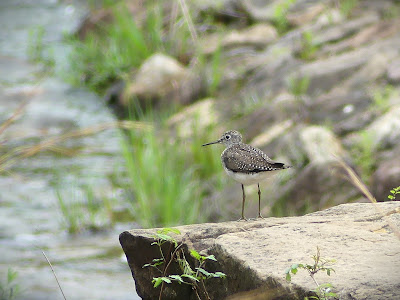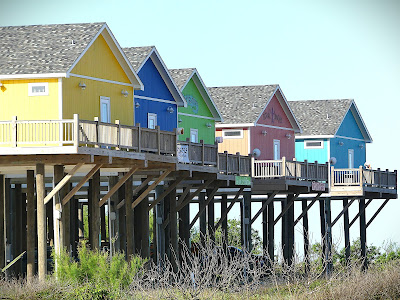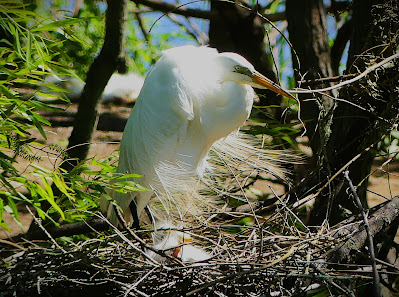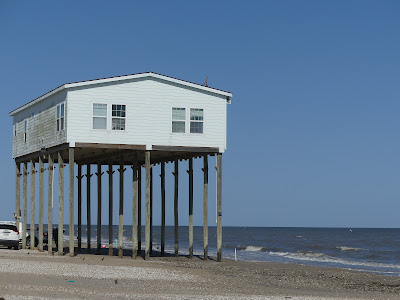5th April 2025
We went to Angelina National Forest knowing that we were racing against the weather. We expected to have until midday at best. We drove the stretch of road looking for the tree trunks marked to show Red-cockaded Woodpecker nest holes. It all seemed very quiet with no sounds of feeding or drumming.
We next tried Boykin Spring Recreational Area where there were only a very few other people about, probably due to the impending storm. Here we did really well in between brief showers. The rain seemed to have forced some migrants down and we were lucky enough for the woodpeckers to work their way through too.
The list for this brief spell, not even an hour long comprised of Brown Thrasher, Solitary Sandpiper, American Robin, Blue Jay, Chipping Sparrow, Red-cockaded Woodpecker, Blue Grey Gnatcatcher, Carolina Chickadee, Ruby-crowned Kinglet, Hooded Warbler, Pine Warbler, Yellow-throated Vireo, White-eyed Vireo, American Crow, Orange Crowned Warbler.
We returned to the hotel by 2pm and as the light levels darked to something approaching twilight we waited out the torrential rain, thunder and lightning.
6th April
Time to move on again. Having packed the car we went back to try for the sparrows again. It took some time but we eventually got decent views, although that can't be said for my photographic efforts.
In the late afternoon we drove through Winnie and on to Crystal Bay, High Island, our base for the next few days. This was a really interesting place built along the beach with many buildings on stilts.
7th April
This is one of the premier areas for migration watching in Texas. Consequently it can be extremely good, or to be frank, rather dire given the expectations held. We were hoping things would pick up, and had a few days in the area but the weather systems were definitely having an effect.
Boy Scout Woods was extremely quiet on our first try. There were a lot of hirundines around the vegetation early on our first visit and they fed for a while then departed.
We found a small band of Myrtle warblers , a Northern Parula, some Grey Catbirds, Blue Jays and Carolina Wren. Apart from an exceedingly poor view of Rose-breasted Grosbeck that we pretty much it.
We travelled the short distance to Smiths Oaks. The board described this as a rookery but it's actually the nesting place for hundreds of herons, egrets and spoonbill as well as a place where migrants are seen.
We had got some useful information at Boy Scout Woods and dropped into Tuna Drive to look for Nelson's Sharp-tailed Sparrow. We failed to see them and decided to try again early the next morning. We did however see Seaside Sparrow, Osprey, Caspian, Sandwich and Royal Tern, Brown Pelican, Little Blue Heron and a Cooper's Hawk.
We reached Bolivar Flats in the late afternoon. It was very hot and Chris made the walk along the beach alone, while I made use of the air conditioning in the car. I did at least remain in the car while it was on. We were amazed by the number of people that left air-con on while their vehicles were parked.
Chris enjoyed his seaside wander, wishing that the Blakeney Point substrate was as easy to walk on as the beach here. He saw a lot of species, recording some colour ringed Piping Plovers too. I had to be content to watch the Brown Pelicans on the receding tide, see how the terns changed their feeding habit once the water depth close to the beach changed and observe the Sanderling and Willet interactions .
8th April
The next day started with another look at the sparrows along Tuna Drive (much easier to find now we knew that Tuna Road was just something the local birders call it and that there was no Tuna Road on the map or in Crystal Beach). It was less windy and having seen plenty of Seaside Sparrows the day before knew the way they tended to fly in a rather heavy manner. The Nelson's were also smaller and a daintier build.



















































